NavSource Online: Submarine Photo Archive
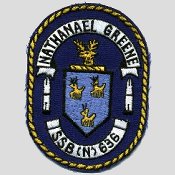
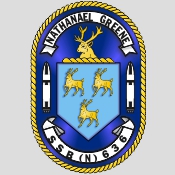
Patch on left contributed by Mike Smolinski, Decal on right by unlimiteddetails.com
Please report any broken links or trouble you might come across to the Webmaster.
Please take a moment to let us know so that we can correct any problems and make your visit as enjoyable and as informative as possible.


| Click On Image For Full Size | Size | Image Description | Source | |
|---|---|---|---|---|
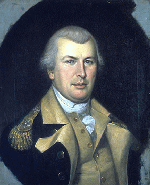 | 43k | Greene was born in Potowomut, Rhode Island, on 27 July 1742. Self-educated, he assumed the management of his family's iron forge in 1770. Soon afterward, he was elected to the General Assembly. He helped organize a militia unit, the Kentish Guards. He joined General Washington's staff in 1776. Within two years, he became the army's Quartermaster General. Succeeding Horatio Gates at the head of the army's final southern campaign, Greene engineered successes at Cowpens and Guilford Court House. His strategy pushed the British out of the Carolinas and Georgia, thereby saving Charleston and Savannah. After the war, Greene faced financial ruin when an army contractor whom he had underwritten defaulted on payments to the American government. His battlefield acclaim, however, prompted the state of Georgia to reward him with a landed estate, Mulberry Grove, where he died on 19 June 1786. | Photo courtesy of National Park Service Museum & submitted by Bill Gonyo. | |
 | 872k | The Nathanael Greene (SSBN-636) is launched on 12 May 1964. | Photo courtesy of Dale Hargrave. | |
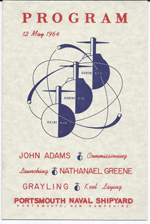 | 431k | One of a kind times three: John Adams (SSBN-620) commissioned, Nathanael Greene (SSBN-636) launched; & Grayling's (SSN-646) keel laid on 12 May 1964. | Photo courtesy of Dale Hargrave. | |
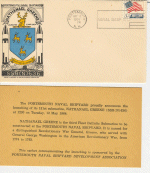 |
458k | Commemorative postal cover on the occasion of the Nathanael Greene's (SSBN-636) launching at Portsmouth Naval Shipyard, Kittery, ME, 12 May 1964. | From the collection of Edmund Cokely, CWO 2, USN Retired. | |
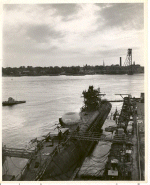 |
255k | First of three photos of a launch tube test sequence on the Nathanael Greene (SSBN-636) at Portsmouth Naval Shipyard, Kittery, ME, probably shortly between the time of her launching and commissioning, May - December 1964. | From the collection of Edmund Cokely, CWO 2, USN Retired. | |
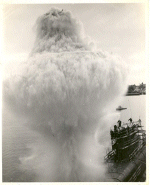 |
224k | Launch tube test on the Nathanael Greene (SSBN-636) at Portsmouth Naval Shipyard, Kittery, ME, probably shortly between the time of her launching and commissioning, May - December 1964. The induced explosion is now rising over the deck of the boat. | From the collection of Edmund Cokely, CWO 2, USN Retired. | |
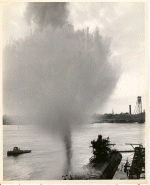 |
199k | Launch tube test on the Nathanael Greene (SSBN-636) at Portsmouth Naval Shipyard, Kittery, ME, probably shortly between the time of her launching and commissioning, May - December 1964. The induced explosion is now losing some of it's boom capacity as it dissipates over the deck of the boat. | From the collection of Edmund Cokely, CWO 2, USN Retired. | |
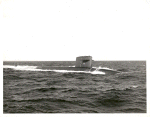 |
231k | Starboard view of the Nathanael Greene (SSBN-636) underway on 17 November 1964. | USN photo # PC 1107481 from the collection of Edmund Cokely, CWO 2, USN Retired. | |
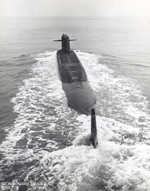 |
700k | Stern view of the Nathanael Greene (SSBN-636) underway off the coast of New England during her alpha trials on 30 December 1964. | USN photo courtesy of Scott Koen & ussnewyork.com. | |
 |
70k | Starboard view of the Nathanael Greene (SSBN-636) underway, probably off the coast of New England during her alpha trials, 1964 - 65. | Official USN photo courtesy of Wendell Royce McLaughlin Jr. | |
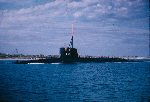 |
145k | Starboard view of the Nathanael Greene (SSBN-636) underway. The image shows some kind of test equipment on the sail, circa 1964 - 65. | USN photo from the collection of Edmund Cokely, CWO 2, USN Retired. | |
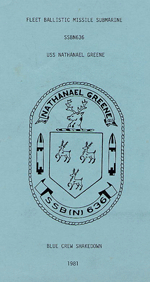 | 1.77k | Thirteen page PDF Welcome Aboard pamphlet of the Nathanael Greene (SSBN-636). | USN photo courtesy of Scott Koen & ussnewyork.com. | |
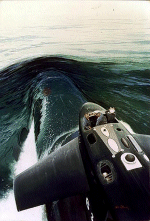 |
72k | A watercolor by the artist Edward Terhune Wilbur entitled "Nathanael Greene (SSBN-636) Underway, 29 March 1965, for 21st Polaris shot". | Painting #11 88-185-K. Courtesy of the USNHC. | |
 |
1.0k | Nathanael Greene (SSBN-636) appears here as a commissioned warship in April 1965. | USN photo # NPC KN-11332, courtesy of Scott Koen & ussnewyork.com. | |
 |
16k | Commemorative postal cover marking the Nathanael Greene's (SSBN-636) first Gold Crew patrol, 1 December 1965. | Courtesy of Jack Treutle (of blessed memory). | |
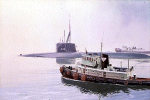 |
42k | A 1969 watercolor by the artist Edward Terhune Wilbur entitled Nathanael Greene (SSBN-636) Puts Out to Sea, 19 March 1969. | Painting #10 88-185-J. Courtesy of the USNHC. | |
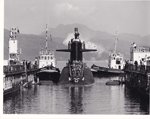 0863616 | 59k | DOCKING NATHANAEL GREENE (SSBN-636) IN AFD 60 AT FASLANE - AUGUST 1984 This report provides some interesting personal and background information and a detailed description associated with the docking of the Nathanael Greene (SSBN-636). After a break in Service of 5 years, and because I had previously been the Deputy Dockmaster of AFD 60 from 1976-79, I was offered the opportunity to resume my career to fill a rather sudden and unexpected vacancy on the dock, so returned to Faslane in April 1984 for a second period as the Deputy Dockmaster. In mid-August the Dockmaster was out of area on leave and I was asked if we could dock an American SSBN in AFD 60. Apparently the Nathanael Greene had lost her propeller somewhere in the Irish Sea and was creeping back to the Clyde areas at about 3 knots using her secondary propulsion motor, a transit of about 5 or 6 days. The U.S. docking facility in the Holy Loch was already fully committed and they needed a suitable alternative close at hand, could we help? AFD 60's next planned docking was over 2 weeks away, so provisionally, yes we could. The Nathanael Greene was similar in design and dimensions to our own Polaris boats so if it would fit our SSBN 'docking cradle' we would be able to help but first we needed the submarine's docking plan to confirm this. Unfortunately this was onboard the boat so was not available but a generic set of 'class' drawings was held at the Holy Loch and were sent over. The good news was that the outer diameter along the parallel length of the hull was identical to our boats, so the centre-line and side blocks forming the major part of the docking cradle would fit. The not so good news was that the change of shape up to the bow and stern was significantly different to our boats and caused a few headaches ~ there needed to be an incremental increase in the height of the centre-line blocks over the length of the bow section by up to 8 inches and for the stern section by 12 inches. This would ensure that these blocks fitted the hull and were able to bear the loading of the submarine. After measuring the differences in hull diameter forward and aft from the class docking plan, we then increased the depth of packing under the specially shaped capping for each block and were able to create what seemed like a good shape. Then just to make life even more exciting, the day before the docking, we were advised that there was an optional sonar array the boat might have fitted in way of the keel just aft of the bow ~ under the circumstances we had no option but to leave out a centre-line block; in the event it turned out that this particular sonar array was not fitted but better safe than sorry. Prior to any docking or undocking in AFD 60 the normal procedure was to visit the boat with accurate scale models of both the dock (with capstans and bollards positions) and the appropriate class of submarine, in order to run through the procedure for the benefit of the Commanding Officer and to instruct the Casing Officer with regard to the movement of wires, ropes etc ~ this was vital as any misunderstanding in handling the wires or ropes could lead to losing control of the submarine, which, within the very narrow confines of the floating dock could prove to be very embarrassing. It was not possible to have this pre-docking meeting for the Nathanael Greene as it was being brought directly to the dock by tugs as soon as it arrived in the Clyde. It is worth mentioning at this point that the Casing Party for a RN boat was a Seaman Officer plus 6 ratings, usually 4 forward and 2 aft. The submarine would be at damage-control state condition Zulu (emergency stations) with the remainder of the crew closed up to minimize flooding or damage in the event of an accident. However, the U.S. navy do things differently, as we soon found out. At about 0630 on the day of docking an SSBN, AFD 60 would be flooded down to 'deep sink', an evolution that took about 90 minutes. The dock was ready when the RMAS tugs Deerhound and Elkhound brought the Nathanael Greene to the entrance of AFD 60, when the wires from the dock's number 1 and 2 capstans were passed over to be placed onto the forward cleats as shown on Graphic 1. As the docking officer, I can be seen on the top of the dock 'valve house' wearing a black bowler hat ~ a historic tradition borrowed from the naval dockyards. Also, at this time, the first pair of nylon rope 'springs' were connected in order to help control lateral movement and act as brakes to gently slow the boat if necessary (Graphic 2). Apart from those below on watch the remainder of the crew were on deck, also, the boat's hatches were open to allow for the easy escape of those below if an 'incident' occurred, all of which seemed like a recipe for confusion. The procedure to bring the submarine into the dock would be to use wires from No's 5 and 6 capstans at the far end of the dock to pull the boat slowly into the dock, whilst wires from capstans 1 and 2 at the dock entrance and then wires from capstans 3 and 4 amidships on the dock would be used to maintain the lateral positioning. The previously mentioned pairs of nylon rope 'springs' were also available to help control lateral movement but more particularly to act as brakes to gently bring the boat to a halt if necessary. Trying to stop the submarine by using the capstan wires would usually result in a broken wire, which is time wasting as it has to be replaced and could be embarrassing. Tugs remain at the stern to keep the boat aligned as it is being drawn into the dock and would be released once the wires from 1 and 2 capstans had been transferred aft and have control of the stern. Graphics 3, 4, 5 and 6 show the Nathanael Greene at stages of being moved steadily into AFD 60. Once the submarine was fully in the dock and 'centred' over the docking cradle, the dock's pumping system was used to bring AFD 60 up under the submarine, which was trimmed down 12 inches by the stern, therefore touching the blocks aft first and then forward, at which point pumping ceases. Then royal navy divers were brought in to do a 'swim through', checking all the dock blocks and therefore assessing the fit of the boat in the cradle. For the Nathanael Greene this was excellent (much relief all round) so we moved on to the next phase, pumping up the dock a further 2 feet to put some weight on the blocks and then passing the shore-power cables to the boat. During this time the divers remained in the water, connecting flooding bonnets to specified salt water inlets and discharges to provide cooling water to/from the submarine's various vital systems. Once shore power was confirmed the boat's C.O. was told he could shut down the diesel generators ~ normally a straightforward procedure for UK boats ~ but US submarines apparently do things differently. To avoid any possible strains to the generator's crankshafts, that might be caused by stresses in the submarine hull, the marine engineer officer wanted the submarine to be afloat. One does wonder about the flexible mounts fitted to the generators, plus the fact that the hogging/sagging indicator on the dock was always maintained within strictly prescribed limits to reduce any hull stresses in the submarine to a minimum. Suffice to say, the CO realised our docking procedures were completely safe and told his engineer to shut down the diesels. With everybody happy the dock was pumped up to normal freeboard, the final services were connected and nuclear safety checks completed. What the U.S. personnel found so amazing was that the docking had been completed so quickly ~ from arriving at the dock entrance at about 0800 we were up and dry by 1230. Although this was the usual timing for one of our boats, the American dock in the Holy Loch would apparently routinely take 12 hours and up to 24 hours for a docking. However, that said, I believe that the new ship-lift facility at Faslane (that replaced AFD 60) can also take up to 24 hours for a docking! But that is another story. Prior to the arrival of the Nathanael Greene at Faslane, the naval base engineers had obviously offered the Americans every possible support they may need, this included teams of scaffolders to erect staging around the stern ~ but all help was declined! Everything but everything needed for the boat's time in dock was flown in from the States; this included the scaffolding and scaffolders, engineers aplenty and various project managers and scientific types. It was quickly established that the shaft had broken, resulting in losing about a third of its length along with the propeller. I believe a spare propeller was available from the Holy Loch but the new shaft had to come from the States, however, the replacements were quickly obtained and fitted. Repairs were completed in about 12 days and the Nathanael Greene was undocked on 3 September 1984 (Graphic 7) and sent on its way rejoicing, as they say. As a result of this incident, I believe that checks were subsequently carried out on the shafts of all U.S. and UK nuclear submarines and apparently incipient cracking was discovered in a number of other boats. As an item of interest, I have included a photograph taken when visiting the area in September 2013, of AFD 60 flooded down to 'deep sink' with a nuclear submarine entering the dock. | Text and photo of AFD 60 courtesy of Peter Fall, Lieutenant Royal Navy (Retired). All the photographs of the docking and undocking were taken by the Clyde Submarine Base Photographic Unit. |
|
 | 61k | An elevated view of the nuclear-powered attack submarine Baltimore (SSN-704), and the nuclear-powered fleet ballistic missile submarine Nathanael Greene (SSBN-636), foreground, moored at Pier No. 22 of the naval station at Norfolk, Virginia on 15 December 1986. The Nathanael Greene is being decommissioned. | Official USN photo photo # DN-ST-87-03677 courtesy of dodmedia.osd.mil & submitted by Bill Gonyo. | |
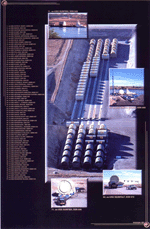 | 569k | Sealed reactor compartments are shipped by barge out of Puget Sound Naval Base down the coast and along the Columbia River to the port of Benton. There the radioactively-contaminated hull sections are transferred to special multiwheeled high-load trailers for transport to the Hanford Reservation in Washington State. Pictured below is the burial ground for spent fuel of the following 77 nuclear reactor submarines as of March 2003: Patrick Henry (SSBN-599), Snook (SSN-592), George Washington (SSBN-598), Scamp (SSN-588), Robert E. Lee (SSBN-601), Thomas Jefferson (SSBN-618), Theodore Roosevelt (SSBN-600), Dace (SSN-607), John Adams (SSBN-620), Abraham Lincoln (SSBN-602), Barb (SSN-596), Ethan Allen (SSBN-608), Thomas A. Edison (SSBN-610), Pollack (SSN-603), Glenard P. Lipscomb (SSN-685), James Monroe (SSBN-622), Skipjack (SS-585), Nathan Hale (SSBN-623), Plunger (SSN-595), Shark (SSN-591), Lafayette (SSBN-616), Sam Houston (SSBN-609), Jack (SSN-605), Haddo (SSN-604), Tinosa (SSN-606), Guardfish (SSN-612), Permit (SSN-594), Queenfish (SSN-651), Ulysses S. Grant (SSBN-631), John Marshall (SSBN-611), George C. Marshall (SSBN-654), Flasher (SSN-613), Guitarro (SSN-665), Alexander Hamilton (SSBN-617), George Washington Carver (SSBN-656), Tecumseh (SSBN-628), Halibut (SSGN-587), Will Rogers (SSBN-659), Henry L. Stimson (SSBN-655), Daniel Boone (SSBN-629), Greenling (SSN-614), John C. Calhoun (SSBN-630), Casimir Pulaski (SSBN-633), Skate (SSN-578), Sargo (SSN-583), Francis Scott Key (SSBN-657), Sturgeon (SSN-637), Benjamin Franklin (SSBN-640), Swordfish (SSN-579), Seadragon (SSN-584), Stonewall Jackson (SSBN-634), Simon Bolivar (SSBN-641), Hammerhead (SSN-663), Mariano G. Vallejo (SSBN-658) , Tullibee (SSN-597), Lewis & Clark (SSBN-644), Pargo (SSN-650), Seahorse (SSN-669), Gurnard (SSN-662), Flying Fish (SSN-673), Gato (SSN-615), Puffer (SSN-652), Seawolf (SSN-575), Baton Rouge (SSN-689), Bergall (SSN-667), Whale (SSN-638), Henry Clay (SSBN-625), James Madison (SSBN-627), Finback (SSN-670), Spadefish (SSN-668), Sunfish (SSN-649), George Bancroft (SSBN-643), Grayling (SSN-646), Pintado (SSN-672), Tunny (SSN-682), Archerfish (SSN-678), & Woodrow Wilson (SSBN-624). As time passes & more boats are retired from service and their reactors are brought here, so the numbers rise. In this photo dated November 2009, 98 nuclear submarines and six nuclear cruisers have been recycled. For an up to date view, click here | USN photo submitted by Jack Treutle (of blessed memory). Insert link courtesy of wikimedia.org |
|
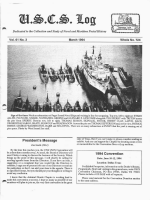 | 291k | "Sign of the times." March 1994 photo of Nuclear submarines at Puget Sound Naval Shipyard waiting in line for scrapping. Top row left to right are Ethan Allen (SSBN-608), Seawolf (SSN-575) Plunger (SSN-595), Shark (SSN-591), Nathanael Greene (SSBN-636), Glenard P. Lipscomb (SSN-685) alongside Sperry (AS-12), with Triton (SSRN-586) across the pier from the Sperry . Bottom row, from left to right Thomas A. Edison (SSBN-610), Skipjack (SS-585), Snook (SSN-592), Henry Clay (SSBN-625), Lapon (SSN-661), Dace (SSN-607), Skate (SSN-578), Swordfish (SSN-579), Sargo (SSN-583), Seadragon (SSN-584). Across the pier are Thomas Jefferson (SSBN-618), and not in view, Patrick Henry (SSBN-599), George Washington (SSBN-598), Barb(SSN-596) & Sea Devil (SSN-664). There are so many submarines at PSNSY that the yard is running out of pier space. | Courtesy of Jack Treutle (of blessed memory). | |
 |
48k | The Nathanael Greene's (SSBN-636) sail was acquired in 1991 by the submarine group NOTU (Naval Ordnance Test Unit) for placement at Cape Canaveral, Fl. This was accomplished under the direction of the then Commanding Officer, Capt. H. L. Sheffield, USN. The sail is located on the bank of the channel entrance to Port Canaveral, Fl. and in full view of the cruise ships passing in and out of the port.
The "formal dedication" took place on 4th June 2003 in conjunction with the commemoration of "The Battle of Midway". In attendance was a "plankowner" of the Nathanael Greene, Clarence (Al) Allen MMCM(SS)Ret 1964 - 1972, USN,RET of Gutherie, Oklahoma, who presented the CO of NOTU with a plaque that came from the Nathanael Greene upon decommissioning. |
Photo courtesy of natgreene.com. Text courtesy of boomersailors.net. |
|
| Back To The Main Photo Index | Back To the Submarine Index |
| Problems and site related matters, E-mail Webmaster |
| This page created by Joseph M. Radigan (of blessed memory) and maintained by Michael Mohl All Pages © 1996 - 2025 NavSource History. All rights reserved. |